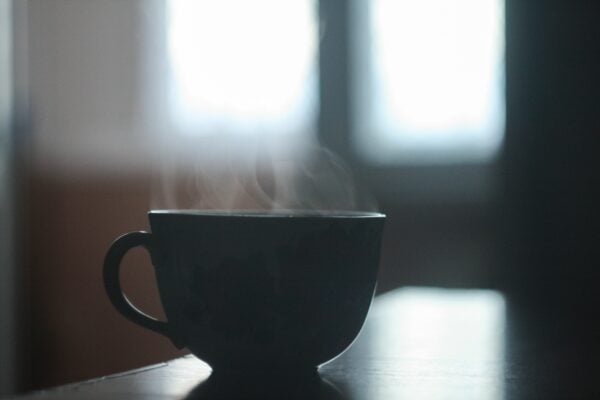A tea caddy, a container in which tea is kept, is the staple of many kitchens throughout the world to this day. Even though in modern times many of these containers are simple in design and primarily help us keep our tea organized, the caddy has held quite some significance for tea aficionados throughout history, in many shapes and sizes.
The name ‘caddy’ is believed to be derived from the Malay word ‘kati’, a unit of measuring in that time equal to a pound and a third. The first caddies brought over from China were jars made of blue and white porcelain design, of which the famously Dutch blue and white tin-glazed earthenware ‘Delfts Blauw’ is a more affordable derivation.

Initially, English manufacturers copied these designs but quickly moved on to create their own out of all kinds of materials like silver, wood, brass and tortoiseshell to name a few. The earliest caddies made in Britain were of somewhat simple design, with no real decorative elements other than perhaps an engraving, made in the shape of a bottle with straight edges.

When tea first arrived in Europe in the 17th century it was very much a luxury item (it cost about 3-6 months of the average wage for a single pound!) and consumed almost exclusively at coffeehouses frequented by the upper classes. As the trade continued to flourish in the decades to come and more and more tea was imported it gradually became more accessible to have some at home, albeit only if you could afford it. Since tea was still such a treasured commodity in those days and heavily taxed it became pertinent for those who could afford tea at home to prevent others, a deviant maid perhaps, from stealing it.

As a result wooden boxes which were ornately decorated, contained multiple compartments, and more importantly, that could be locked, became highly popular as caddies. Even more so, because tea caddies were items of prestige it is no wonder that the design of these containers were tied to contemporary fashion trends and often made out of materials of the highest quality, particularly mahogany and rosewood.
These days tea is one of the most abundantly accessible beverages consumed in the world. So luckily we no longer have to put our tea under lock and key. However, for true tea enthusiasts how one stores their tea remains an important aspect. You generally want to keep five conditions in mind: light, heat, moisture, odor and air. Light, heat and moisture damages the tea, tea easily absorbs other strong odors thereby diluting its own, and exposure to air leads moisture and odors to reach the tea. In other words, if you are serious about your tea, a proper tea caddy is still of great use.



